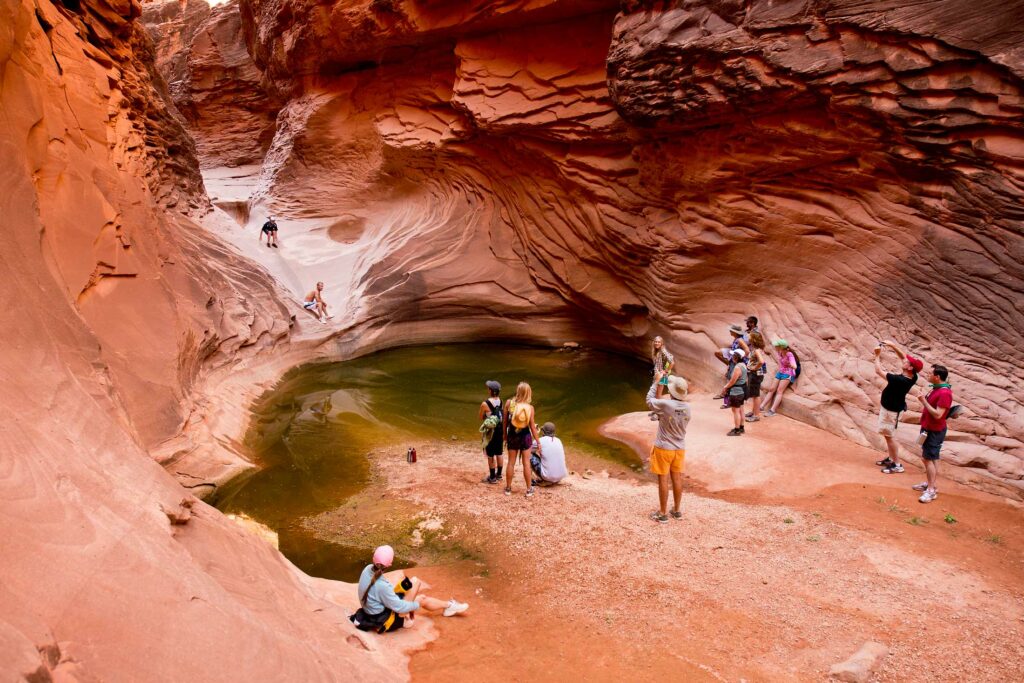Whether out of excitement, fear, or possibly a combination of both, the presence of snakes is often considered when taking a trip through the Grand Canyon. The Grand Canyon lies at the intersection of three of the four largest deserts in North America, the Great Basin, the Sonoran, and the Mojave. It has a variety of habitat types: from perennial clear water streams to rocky dry cliffs and slopes. Because there is always water in a landscape defined by its lack of it, a fascinating array of wildlife live in and around the canyon. Snakes are among the most cryptic, interesting and unnecessarily feared groups of animals we see in the canyon. There are only a few species of snake that are most likely to be encountered in the Grand Canyon, though there are a few more that have occasionally been found there.
Venomous Snakes:
There are three species of venomous snake that have been confirmed to live in the canyon proper. All are species of rattlesnakes (Crotalidae). Rattlesnakes are often misunderstood and are an important part of the ecosystems they inhabit. Contrary to popular belief, baby rattlesnakes are not more dangerous than adults. Both can control their venom and the bigger ones have more of it!
Grand Canyon Pink Rattlesnake (Crotalus oreganus abyssus):
Pinks, as they are often called, are the most common rattlesnakes encountered in the Grand Canyon. They are a subspecies of the western rattlesnake and interestingly, they can only be found in the Grand Canyon! Though the common name would imply they are always pink in color, they have a wide range of colors. Some are salmon or vermilion in color, while others are more orange, faded yellow, or tan. Juveniles have dark blotches down their backs. These blotches fade as they age and the snakes begin to look more like the rocks they are found around. The range for pinks is from Lees Ferry to National Canyon, 167 miles downstream. They are typically very docile in temperament, preferring to rely on their camouflage to avoid confrontation.
Speckled Rattlesnake (Crotalus pyrrhus):
Speckled rattlesnakes are a beautiful species found in the western end of the Grand Canyon, downstream of Upset rapid at mile 150. Their base color ranges from white to gray to pink and they have a very broken up pattern of darker spots. Often older specimens almost look like granite! Much like the pinks, they rely on their camouflage and are reluctant to rattle or strike.
Blacktail Rattlesnake (Crotalus molossus):
The least commonly seen of the Grand Canyon rattlesnakes, and also the largest, is the blacktail rattlesnake. It occurs in the canyon downstream of Havasu creek at mile 158. Their base color is generally tan or greenish, with strong dark patterns down the back. The last few inches of tail before the rattle are completely black all the way around. They tend to be more defensive than the other two species but like any snake they would rather avoid animals larger than themselves.
Non-Venomous Snakes:
There are a few species of non-venomous snakes in the Grand Canyon and while none are frequently seen, some are more common than others.
Whipsnakes (Masticophis sp.)
There are two species of whipsnake in the Grand Canyon, The striped whipsnake (M. taeniatus) and the coachwhip (M. flagellum). The striped whipsnake is found throughout the upper and middle sections of the canyon. The coachwhip is found in the western end of the canyon downstream of Lava Falls rapid at mile 179. Both are diurnal sight hunters with long slender bodies, narrow pointed heads and large eyes. They primarily prey on lizards and are incredibly fast, so count yourself lucky if you see one before it darts under a rock or into the bushes. Striped whipsnakes are olive-brown with cream colored and darker colored stripes running lengthwise down their bodies. Coachwhips do not have stripes, and have a variety of colors that change down the length of the snake, making them a very beautiful find.
California Kingsnake (Lampropeltis californiae):
You read that right, and yes, the Grand Canyon is in Arizona. California kingsnakes are easily identified in the Grand Canyon by their black bodies and white bands encircling them. They tend to be laid back, rarely biting even when bumped or grabbed. They are opportunistic feeders that will eat most vertebrates. However, the most common food item for them is rattlesnakes. Studies show approximately one quarter of the prey items, and 37% of the biomass, found in the stomachs of California kingsnakes are rattlesnakes.
Other non-venomous snakes:
There are a handful of other snakes that have infrequently been found in the Grand Canyon. These include desert night snakes, Sonoran lyre snakes, patch nosed snakes, and gopher snakes.
Even though snakes would rather avoid us than bite us, it is important to be aware of them and use safety precautions around them. In a backcountry setting, a rattlesnake bite is a quick way to a very shortened trip and expensive hospital bill. Fortunately, bites are rare and easily avoided. Pay attention to your surroundings and look where you are walking. Be aware of your hand placement on rocks. Use a headlamp at night and look to the sides of where you are walking as well as in front of you.
Finding snakes in the Grand Canyon is not always an easy task because they are often active at night, possess effective camouflage, and hide amongst brush or under rocks. Seeing snakes does not occur on every trip, which is good news for some and bad for others. If you are trying to find (or avoid) them there are a few ways to increase your chances. Ask your guides about the places and habitat that they often see snakes. Take a walk around camp at dawn, dusk, or after dark with a good headlamp. Always keep your eyes open on side hikes. If you love them or fear them, seeing snakes is a great privilege in one of the greatest landscapes on earth.
Jeff Compton
Grand Canyon River Guide
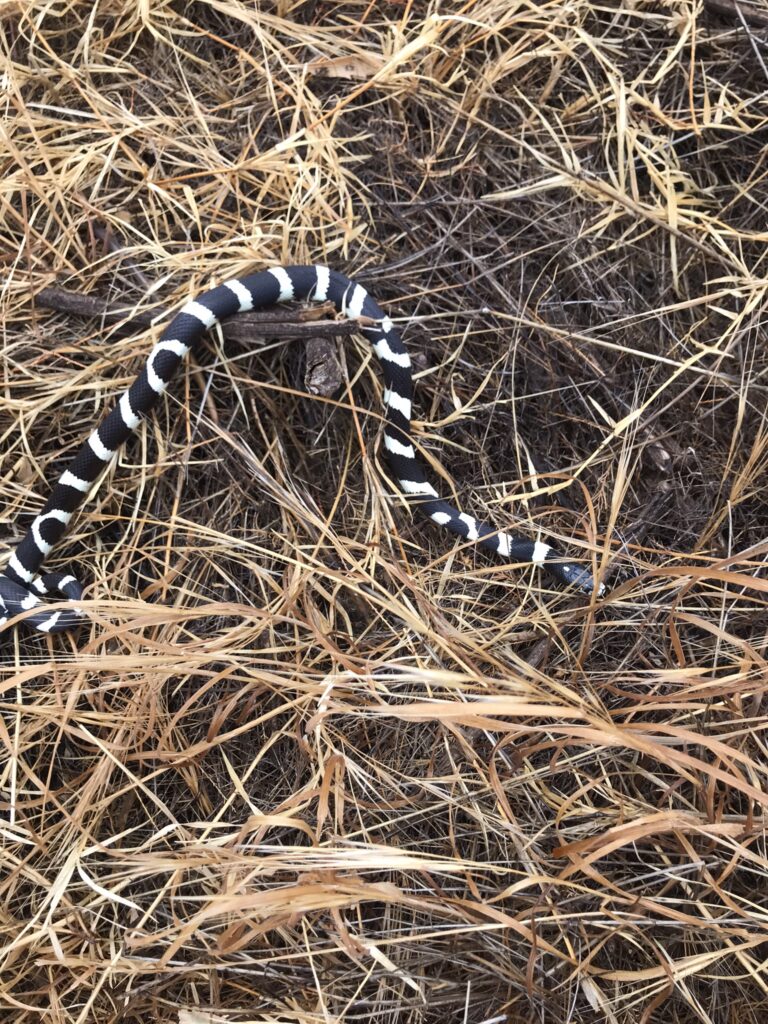

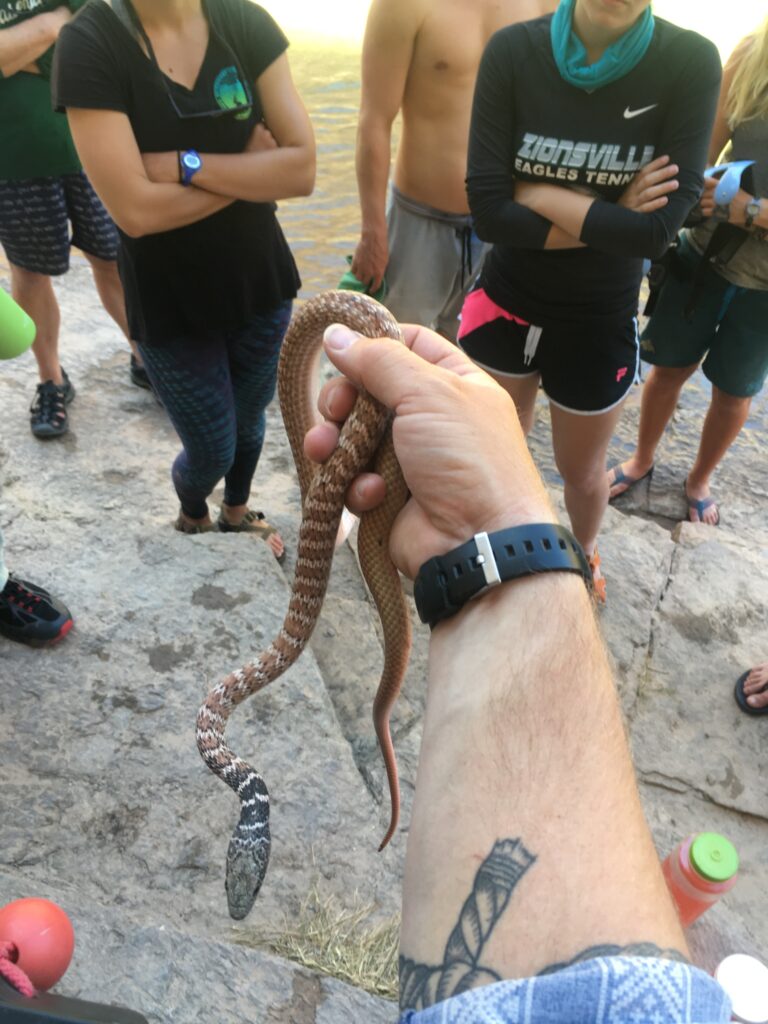
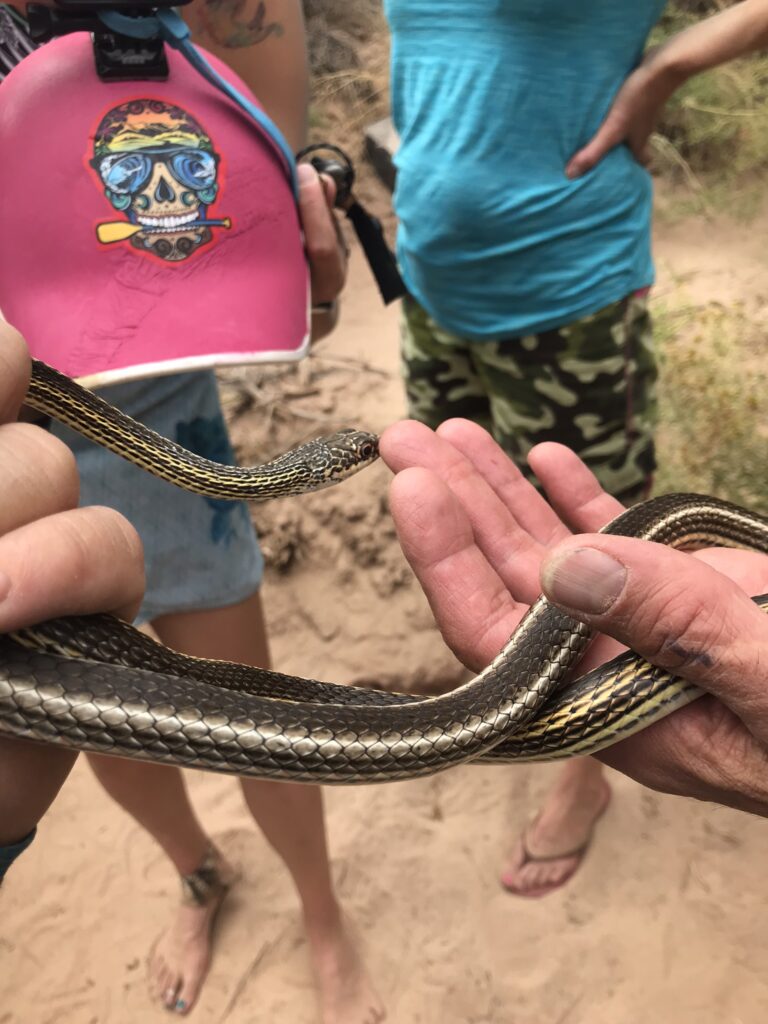



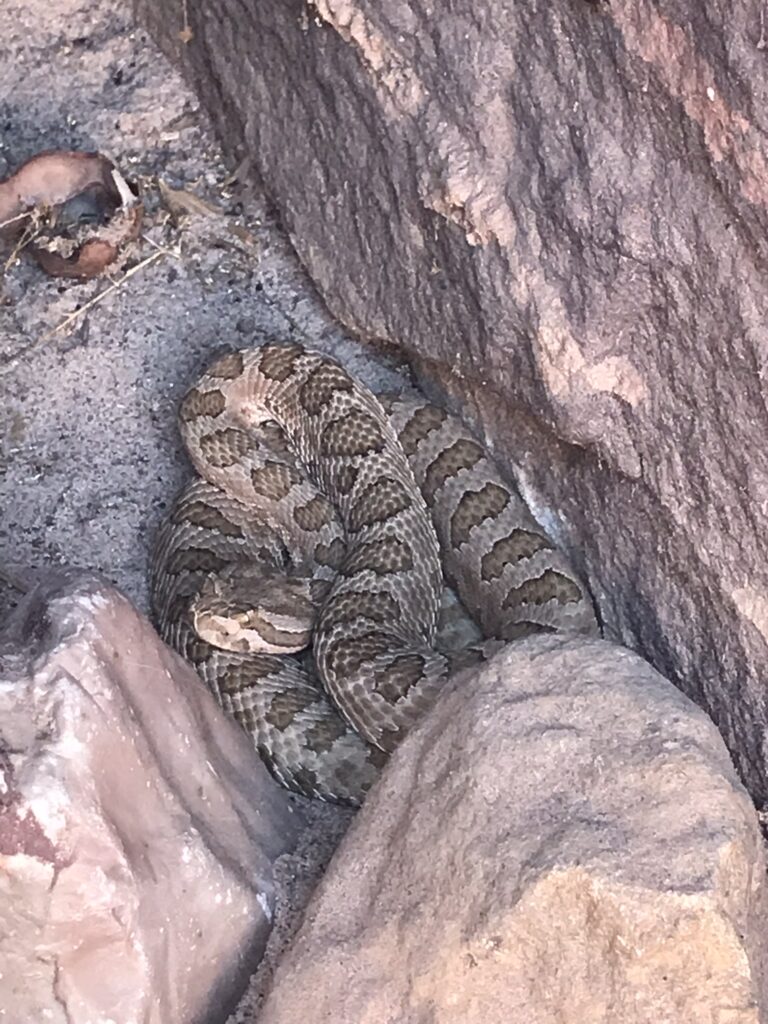
1) California Kingsnake 2) Desert Night Snake 3) Coachwhip 4) Striped Whip Snake 5) Blacktail Rattlesnake 6) Speckled Rattlesnake
7) Adult Grand Canyon Pink 8) Juvenile Grand Canyon Pink
All photos by Jeff Compton


